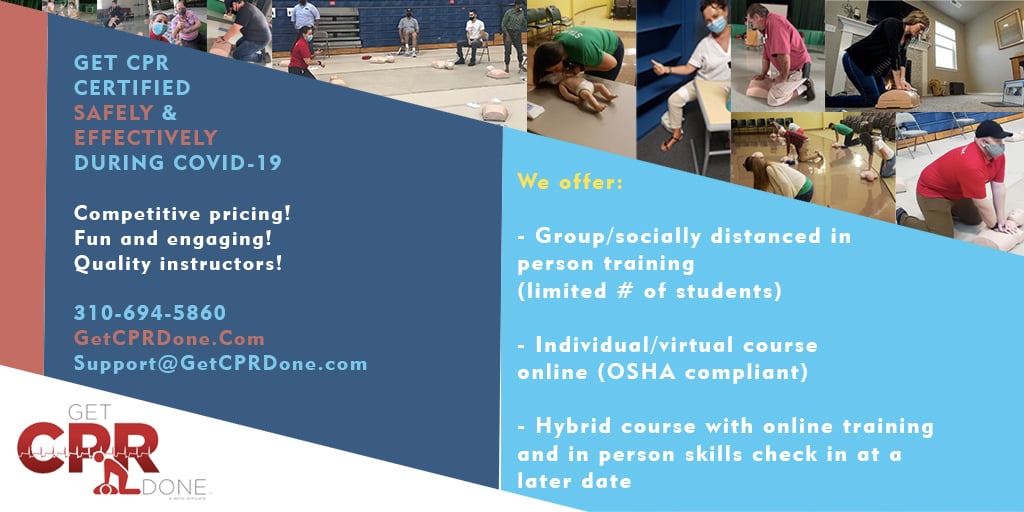
CPR is one of the most basic and essential first aid and emergency response skills to know. According to Felicia Gonsalez, our director for Get CPR Done, it’s a skill that everyone should know. While certification might be earned as early as twelve years old, the AHA says that children as young as nine years old are capable of learning the skills necessary to safely and effectively practice CPR.
The Basics of Emergency Response
Felicia recognizes three basic tenets of CPR training, and indeed any emergency situation, that are absolutely essential to know no matter who you are or whether you choose to be certified or not. Those three tenets are:
- Recognizing an emergency. It’s important to be able to tell that an emergency situation has arisen; oftentimes, an emergency doesn’t look like it does in popular media. Sometimes there is no screaming or explosions; sometimes emergencies start and end dangerously quietly. Everyone should learn what different emergencies look like (how to spot a drowning victim, how to recognize cardiac arrest, how to catch gas leaks and fires before they become dangerous, etc.), what to do in immediate response, and when and how to call for help.
- Calling 9-1-1. Building from the last point, once an emergency is recognized, it is vitally important to know how to contact and initiate emergency services. See our At-A-Glance: Calling 9-1-1 post for more details about how and why you should call your emergency number.
- Providing basic emergency care. A proper understanding of basic first aid and emergency response can mean the difference between life and death. Between calling 9-1-1 and the arrival of emergency responders, any help that can be administered on the scene by someone with specific emergency training can help to keep a victim in distress out of danger until help arrives. (If you need a CPR Training for your school, give our friends at Get CPR Done a call!)
It’s also important to recognize that in an emergency situation, you may be the only person on the scene with any kind of training. You can be the leader in this situation!
How to Perform CPR
While it is still important to receive proper training, an understanding of the basic concepts of CPR can be helpful if there is no trained responder on the scene. While a 9-1-1 operator is trained to walk callers through basic first-aid responses, having advanced knowledge can make their instructions easier to follow.
Here is the basic procedure for performing CPR, according to the AHA:
- Clear and secure the scene of the emergency. Make sure that you and the victim are safe and call for help, either doing it yourself or directly assigning the task to a specific person.
- Identify the need for CPR. The victim will be unresponsive. Watch the person’s chest for signs of movement. If you see nothing at all, begin compressions. It’s important to note that if you are unsure whether or not to perform CPR, if you are trained, you should go ahead and perform compressions. According to the AHA, CPR is unlikely to cause permanent damage to a person’s system if performed unnecessarily, so this will be a case of better safe than sorry.
- Perform compressions. Put one hand on top of the other, lock out your elbows, and push hard and fast in the center of the chest to a steady beat of at least 100 compressions per minute (you can sing the song "Stayin' Alive' by the Bee Gees to get the rhythm down) until help arrives.
Again, if you have the option to become certified, please do so, as written instructions cannot compensate for direct, professional instruction.
Why CPR Certification Matters
As mentioned above, CPR certification can mean the literal difference between life and death. Immediate CPR can double or even triple the chances of a victim surviving cardiac arrest. It’s a vital step in the chain of survival, which is the organized and efficient delivery of quality help across all states of the response and recovery timeline. If you are the only person on the scene, and you can offer quality CPR, then the chain remains unbroken, and the victim has the best possible chance to survive.
For more information about CPR, see our Get CPR Done Program. If you would like to schedule training for yourself or your staff, contact us here.

